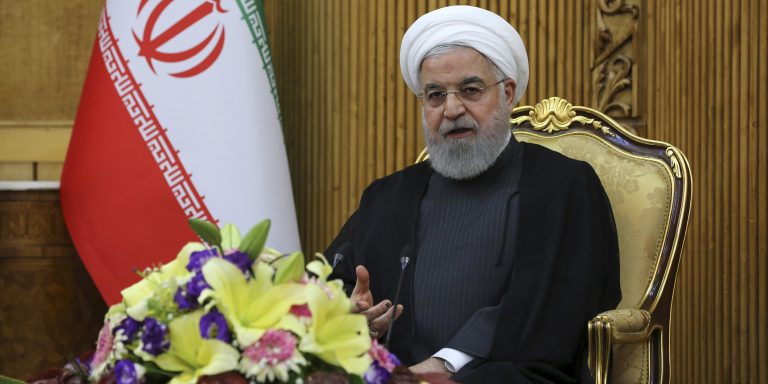INTELBRIEF
December 11, 2019
IntelBrief: Tensions with Iran Resurface

- U.S.-Iran tensions are escalating again after three months of relative stability.
- U.S. officials report that Iran is resupplying its allies and proxies in Yemen and in Iraq with increasingly sophisticated short-range missile equipment.
- U.S. commanders cite the Iranian military movements as evidence that Iran might not be deterred, and are asking for more U.S. troops to deploy to the Gulf.
- Consideration of adding U.S. troops to the region confirms that the U.S. maximum pressure campaign against Iran is not accomplishing its core objectives.
.
Despite three months of relative stability in the U.S-Iran relationship, signs began to appear this past November and December that tensions were re-emerging. In early December, the top State Department official responsible for Iran, U.S. Special Representative for Iran, Brian Hook, confirmed that on November 25, U.S. naval forces captured an Iranian shipment carrying sophisticated components for short-range and tactical missiles bound for the Houthis fighting Saudi-led forces in Yemen. Another press report asserted that Iran had transferred short-range missiles to its allied forces inside Iraq. Iran had previously been reported to have transferred missiles to the pro-Iranian Kata’ib Hezbollah militia in Iraq, and Israel bombed Iranian missile installations in Iraq earlier in 2019. Neither transfer would necessarily be unprecedented, insofar as Iran has armed and trained Iraqi Shia militias since the 1980s, and the Houthis since 2014. However, the transfers took place during two months of major protests against Iranian influence in Iraq and amid signs that Saudi Arabia is seeking to settle the long war in Yemen. The transfers therefore represented a sense of confidence on the part of the Iranian leadership that events in Iraq and in Yemen had not caused Tehran to exercise restraint in its efforts to project regional power.
The Iranian transfers appeared to explain the late November 2019 comments by the commander of U.S. Central Command (CENTCOM), Gen. Kenneth McKenzie, that the U.S. force deployments during May – October might have deterred Iran from attacking U.S. targets, but that 'I wouldn’t rule [another Iranian attack like the September 14 attack on Saudi oil infrastructure] out going forward.' Referring to November rioting in Iran in response to a sudden reduction in fuel subsidies, Gen. McKenzie added that ‘Iran is under extreme pressure’ and is trying to ‘crack the [U.S. maximum pressure] campaign’ with attacks that could potentially provoke an American military response. Coincident with Gen. McKenzie’s warnings, a series of rocket attacks on Iraqi facilities used by U.S. forces occurred, presumably by Iran-backed militias.
The identification of new Iranian threats, coupled with the CENTCOM assessment that the additional U.S. deployments have not deterred Iran to date, seems to have prompted consideration of deploying additional U.S. forces to the region. One report, denied by the Trump administration, said that the United States might send dozens more warships and as many as 14,000 more U.S. military personnel to the region. U.S. officials, including Defense Secretary Mark Esper, denied that an additional deployment of that magnitude was under consideration, but Esper’s subordinates at the Defense Department stated on December 5, during Congressional testimony, that deploying additional forces was a possibility. Cable News Network reported on December 5, 2019 that a more likely figure could be an additional 4,000 – 7,000 personnel focused on air and missile defense. It is also possible, although speculative, that U.S. officials sought to downplay any imminent significant U.S. force buildup in order not to derail Iran’s release on December 7 of a U.S. national, Xiyue Wang, imprisoned in Iran for the past three years.
Senior civilian U.S. defense officials appear to be arguing against a large increase in U.S. force levels in the Gulf in part because such a buildup would represent an admission that the maximum pressure campaign against Iran is failing. U.S. officials have advertised the campaign, consisting of a steady increase of U.S. sanctions on Iran, as succeeding in weakening Iran strategically by causing a severe economic downturn. Although there is evidence that sanctions are harming Iran’s economy, there is no evidence, to date, that the economic weakness is translating into any Iranian regional or strategic retrenchment. Were the campaign accomplishing its core goals, Iran’s strategic weakness would presumably void any need for more U.S. forces to be deployed to the Gulf region.
.
For tailored research and analysis, please contact: info@thesoufancenter.org